Pen & Ink Pages 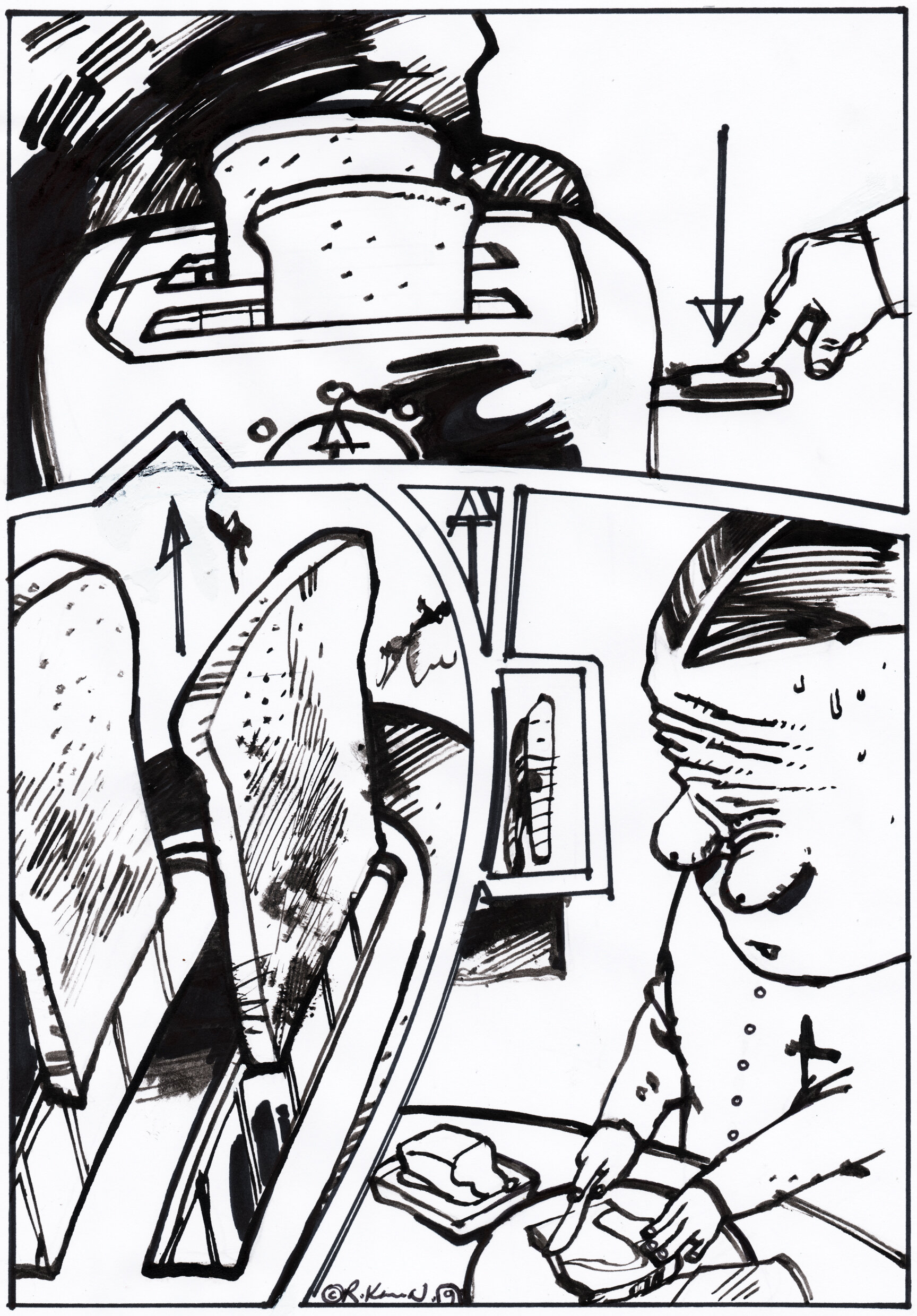






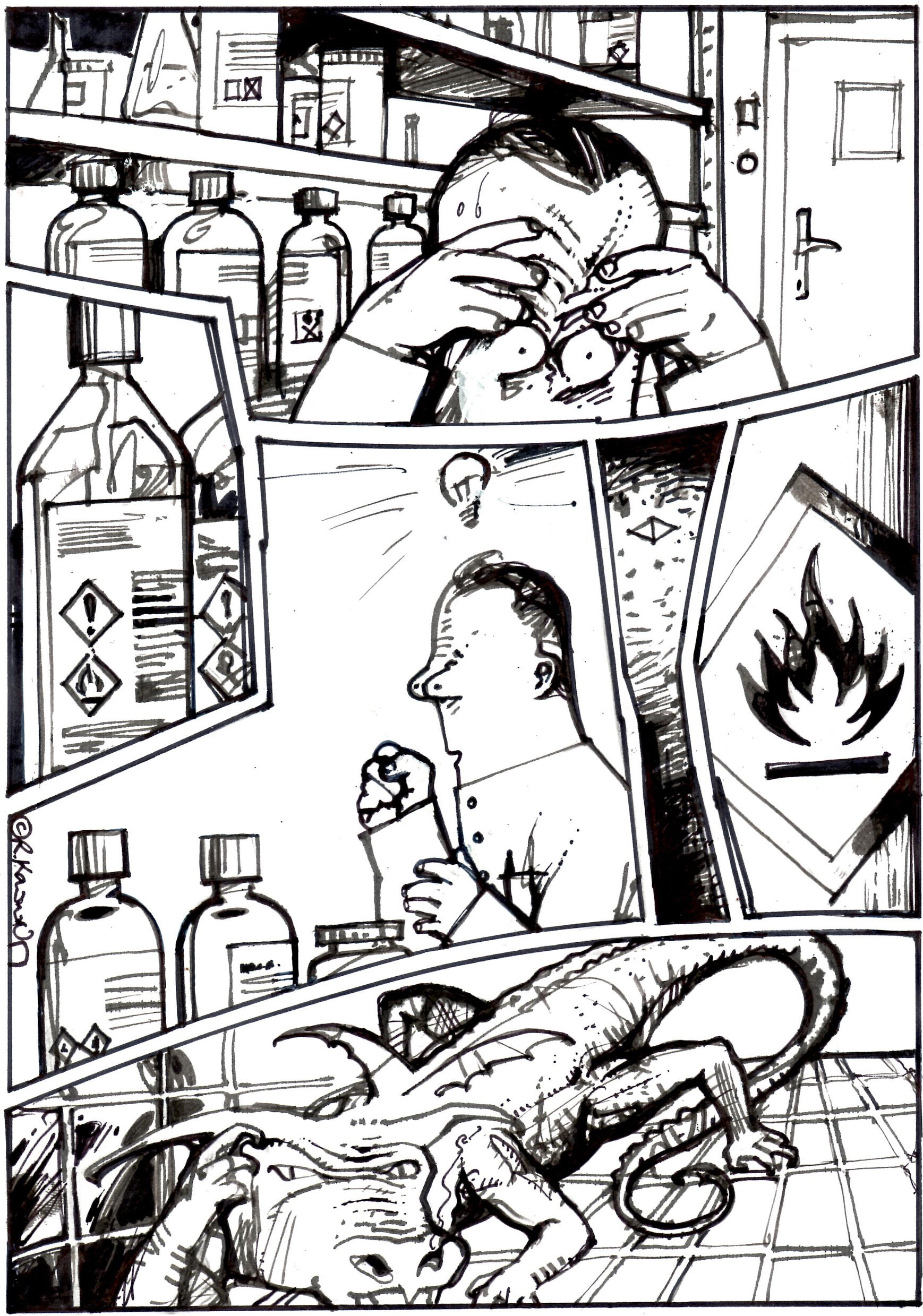

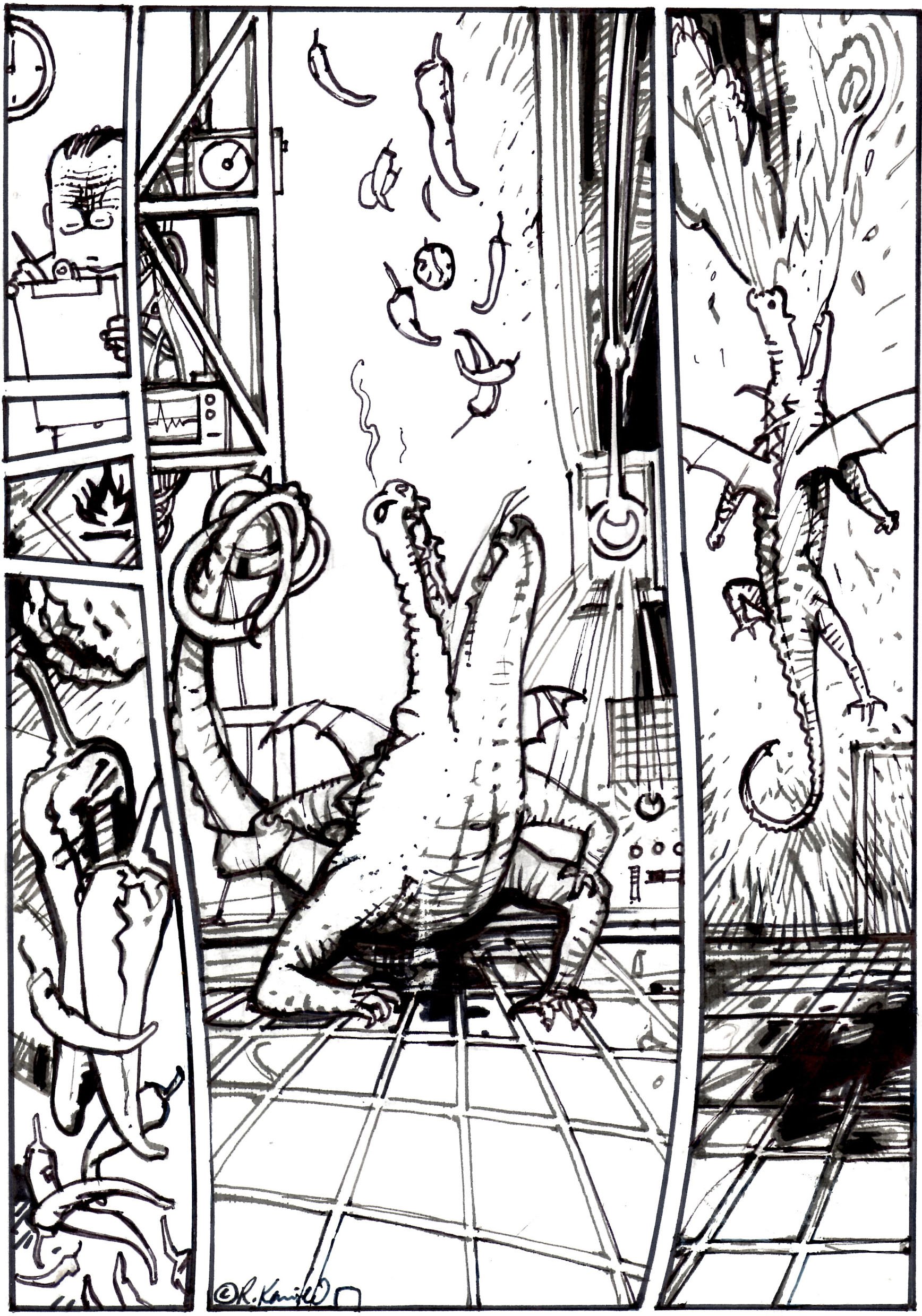
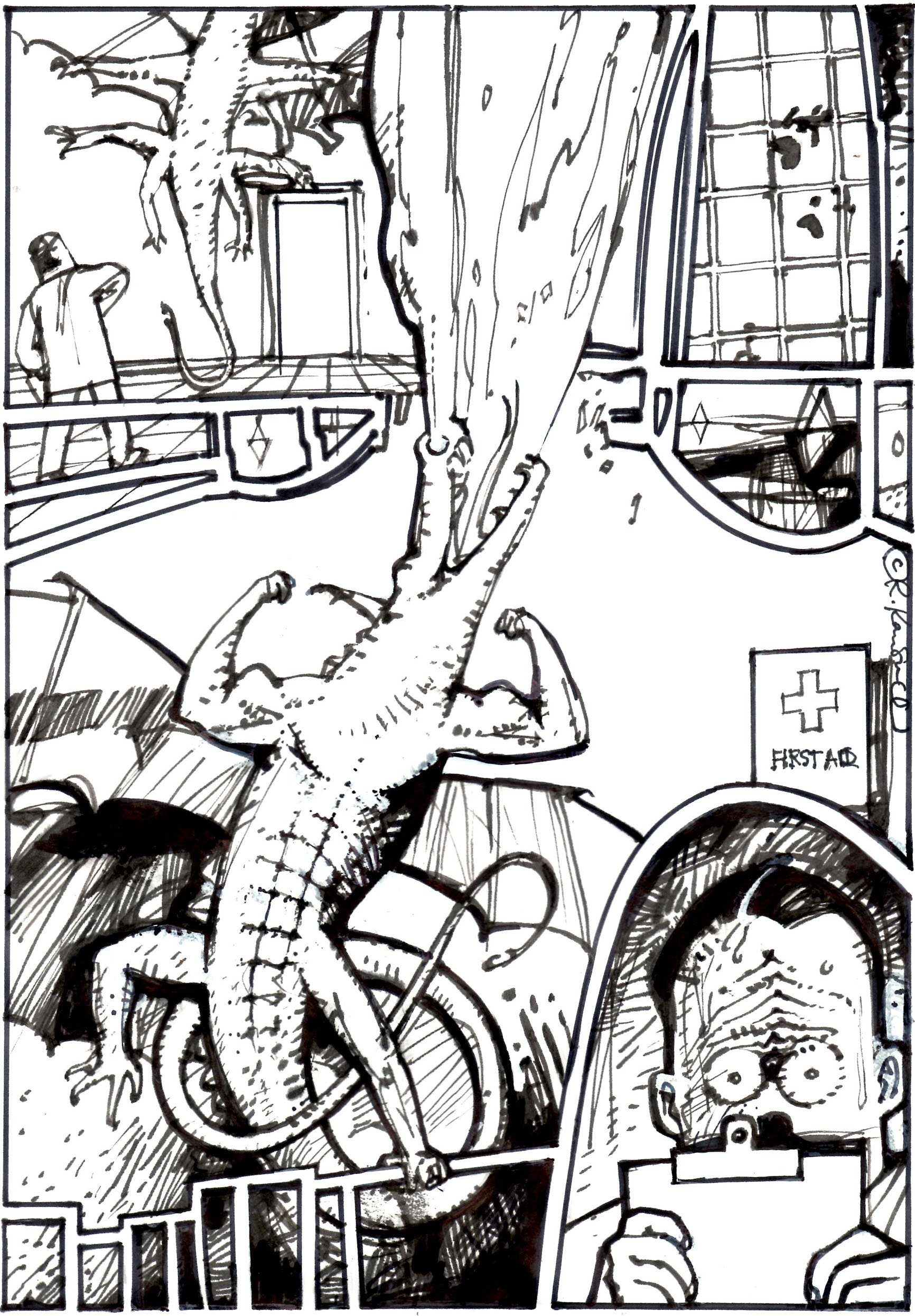







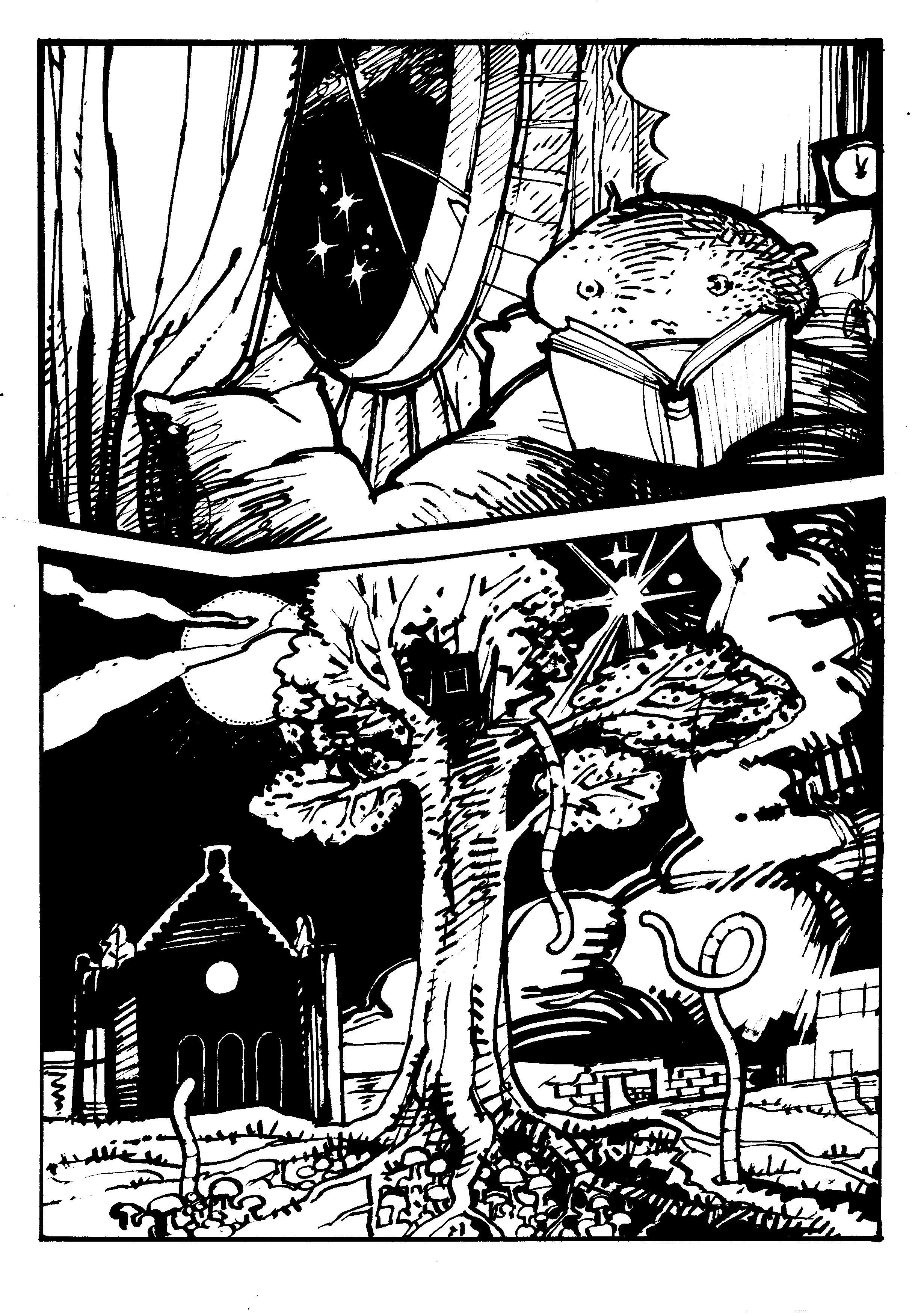

A Conversation About Drawings For Books
S.W:
The drawings for your books are delightfully strange. Where do the ideas come from?
R.K:
The ideas for my drawings come from a wide range of places. They can come from any small or big thing I see or experience.
The ideas for ‘The All-day breakfast Experiment’ and ‘The Hatching Documentation’ came mostly from working in the APS department at the University of Sheffield. I was inspired by the work environment and lab/greenhouse activities combined with everyday things such as food & drink.
Ideas can come from ordinary conversations, or from things I come across, or find in the street. Even though a lot of my drawing is abstraction, everything is mostly based on direct observation of real things.
Language is definitely a very big inspiration, and ideas are often born out of word play and associations. The idea for ‘The Transitory Pea’ came from conversation and jokes during a pub lunch. Somebody used the word transitory in connection with vegetables, and I made a note of that.
Often ideas are developed by elaborating on one small idea, by sort of taking that visual idea for a mind-journey, and see where I might end up. A typical thing I do is to isolate a seemingly random thing and combine it with something else, and in that way, shift the following associations along.
S.W:
I enjoy your idea of combining random elements. Sometimes something magical and poetic happens when you do that. It feels important that you remain playful, which can be hard and requires a certain confidence.
R.K:
I think the editing and selection process that has to follow the playful stage of creativity is where a certain confidence is crucial. Artists have to take a leap, and have the faith to let the results live.
I love writing but I have always been a condensing writer (both in Danish and English). My way of working requires black and white drawing and black and white text to be symbiotic. I have come to see my drawing and text compilations as novels, but not graphic novels. They are not illustrated text, nor are they pictures with text accompaniment. I feel that they are simply novels of fiction.
S.W.
Something I’ve been asking myself is this: What steps can I take to make my work better? What does ‘better’ look like? So, Rita, what might your ‘better’ look like?
R.K.
That is a good question. I know that when I’m finished with a project, I usually think about how the next project can become better, or different. I try to make it ‘different’, and that hopefully ends up making it better, in my own opinion (I don’t know about the opinion of the audience). I’m trying to become better all the time, better at drawing, and better at constructing a ‘story’ that works for me.
I’m working on a project at the moment, and I am committed to finishing that particular idea, step by step, before I start a new project. I know that when I finish the project there will be a weird anti-climactic time of reflection, and that’s when I will form an idea for something new. Something different and hopefully better, but I don’t know what it looks like yet.
S.W.
I am tempted to ask you what your work is 'about', but I realise that is such a difficult question. What is/are your intention(s)? And, ideally, what would you like the audience to take away from your work?
R.K.
I would like the reader/audience to take away...
A sense of wonder as to the information in the books, (reactions probably ranging from: ‘this is totally insane’ to ‘this is weird, but I dig the weird’). I want the reader to finish looking through the chapters, and then wondering about what they actually just experienced... hopefully reading the whole thing again.
I personally love a good story, and by ‘story’ I mean a lie. (I’m not saying I’m lying, because all the things I say are utterly true, and rooted in reality and history... of course it is!) It fascinates me that if you say a thing enough times it eventually enters the ‘shared psyche’ of the world, and becomes a kind of truth. We live in a time where we can’t really trust the authenticity of any images, text or information, and I think that has changed the way people look at the world.
I want my work to enter the ‘shared psyche’ somehow, by appealing to the imagination and prior knowledge of the reader. There are a lot of sections in my books referring to really dark things in the world, mixed in with the more surreal, and lies/true stories with humour too. It’s a dossier of episodes connected by an ever-expanding web of connections. What is the meaning of life? That is what my book is about. Nobody knows the meaning of Life but we keep looking for answers.
S.W.
You are reflecting the chaos, the mundanity, the weirdness and the harsh reality. It is a rich blend.
Your books reminded me of something I heard recently that helps me a great deal to navigate the contemporary human condition. It is 'The little things are the big things'. I took that to mean that the details we can easily miss or ignore are really the important things, the things that make life so worth living. This also reminds me of 'Seinfeld' which was really about nothing but was also fundamentally human.